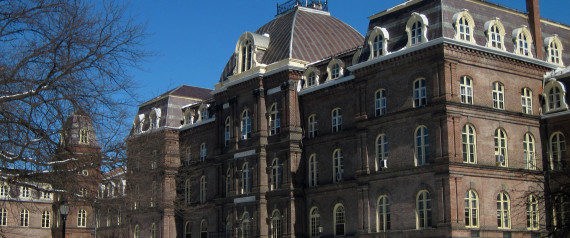JKCF Cooke Prize Featured in The Huffington Post
Vassar College Actively Recruited Low-Income Students, And Got $1 Million For It
Average annual tuition for private, nonprofit colleges is a staggering $32,000 — leaving many students, particularly those from lower-income households, saddled with debt. Fortunately, some schools are focusing their efforts on making attending college less of a financial burden and more accessible.
Vassar College is the first winner of the $1 million Jack Kent Cooke Foundation’s Cooke Prize for Equity in Educational Excellence for its work in enrolling high-ability, low-income students, the foundation announced Tuesday.
“We wanted to incentivize good behavior, and we wanted to ensure that high-performing, low-income kids who need help in colleges get it,” Harold Levy, the foundation’s executive director, told The Huffington Post. “Vassar has done something that is quite extraordinary.”
In an analysis published in September, The New York Times ranked Vassar as the most accessible top college in the nation — a distinction it gave the school based on how many students from low-income households were accepted to the most recent freshman class, as well as the net cost of attending. This analysis differed from typical rankings, like that from U.S. News and World Report, which do not take college accessibility into account — and it influenced the foundation’s decision, officials with the nonprofit organization said.
“It’s great to see colleges be rewarded for doing the right thing, because too often they’re rewarded for doing the wrong thing,” Steve Burd, senior policy analyst for nonprofit public policy institute Education Policy Program of New America, told HuffPost. “Rankings generally celebrate schools for getting more and more exclusive.”
The Jack Kent Cooke Foundation doesn’t have any numerical benchmarks to determine whether a school deserves this prize. Instead, it looks at schools comprehensively: The organization aims to honor schools that not only offer financial aid but also work to recruit low-income students and help them succeed while on campus.
“Part of the reason for doing this is to encourage creativity,” Levy said. “There’s no single measure of criteria.”
Catharine Hill, who became president of Vassar in 2006, has a background in economics focused on college accessibility. One of the biggest changes she made was to dedicate more funding to need-based financial aid. In 2007, she also moved the school back to a need-blind admissions process, meaning that a students’ financial background is not a factor in whether they are admitted. The school worked with Questbridge, a nonprofit organization that connects motivated low-income students to selective colleges.
The percentage of first-year students receiving federal Pell Grants, which are awarded to students from lower-income backgrounds, went up from 12 percent in 2007 to 23 percent this year. Now, the average lower-income student at Vassar pays about $6,000 a year, according to the Jack Kent Cooke Foundation — a number that’s significantly lower than the full sticker price of $49,570 for annual tuition.
The $1 million prize is “no-strings-attached,” but Levy said he expects that schools will use it to further their efforts in increasing socioeconomic diversity among the student body and supporting students once they are at the school.
“The schools that have made this commitment have already demonstrated that they know how to manage themselves and they know how to do the right thing, and we trust them,” Levy said.
Vassar plans on using the money for three causes, Hill said: expanding an orientation program for first-generation and low-income students, increasing support for Dreamers and funding unpaid summer internship opportunities for students.
“Vassar’s been a school that’s committed to making a great education available to students for whom it wasn’t previously available — that’s why it was founded originally, for young women,” Hill said, adding that she wants the college to “live up to the school’s commitment to diversity and issues of social justice.”
“A lot of private colleges have really small endowments, so it’s difficult for them to provide the kind of support that Vassar’s able to do,” Burd said. However, he noted, there are schools that can use funds more responsibly.
“[There’s] a lot of outside pressure on the more elite schools to become more diverse,” Burd said, “but it’s also a question of how they’re using their institutional aid dollars, and there’s a lot of incentive to use it for merit-based scholarships rather than need-based.”
While public colleges may provide more opportunities for poor students because they are larger schools, Burd said, “it’s important that low-income students have the ability to go to the best colleges in the country.”
Private and public schools have been taking steps to recruit and support lower-income students. Tufts University made a commitment to “proactively and openly” recruit Dreamers, the school announced on Tuesday, according to The Boston Globe. The City University of New York is returning tuition money to immigrant students who live illegally in the U.S. and paid out-of-state tuition even though they were eligible for in-state rates.
Amherst College, which was one of the first schools to partner with Questbridge, has also been at the front of the movement. The school offers generous scholarships and pays for first-generation and low-income applicants to visit the campus. Amherst announced initiatives to help low-income students, both within Amherst and in the neighboring community, last January at the White House.
